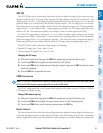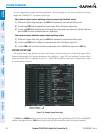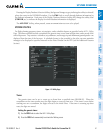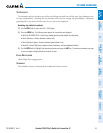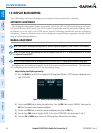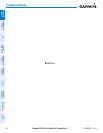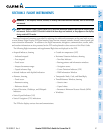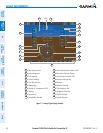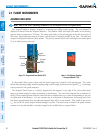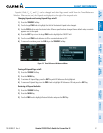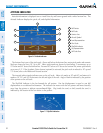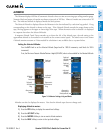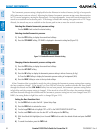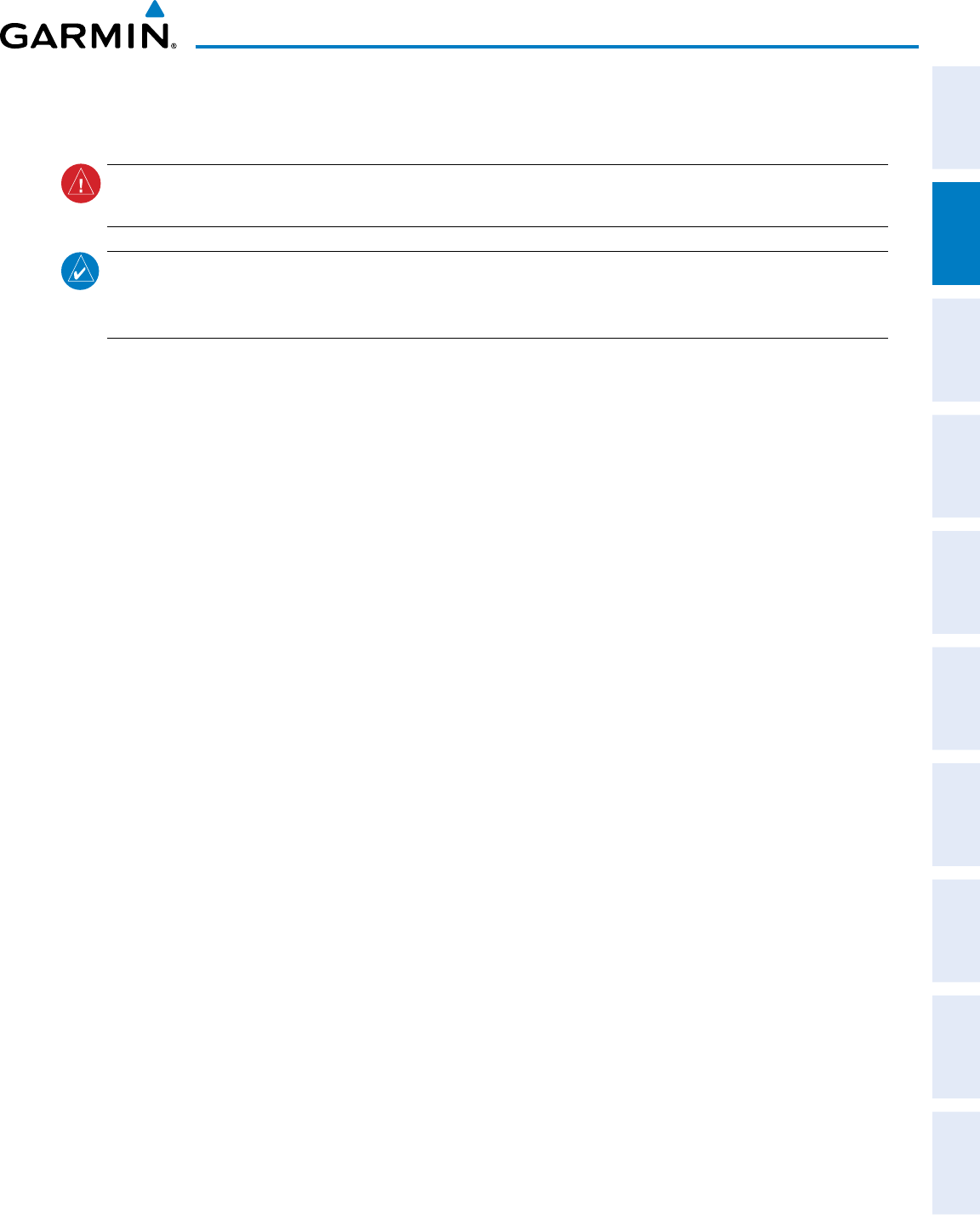
190-00498-07 Rev. A
Garmin G1000 Pilot’s Guide for Cessna Nav III
47
FLIGHT INSTRUMENTS
SYSTEM
OVERVIEW
FLIGHT
INSTRUMENTS
EIS
AUDIO PANEL
& CNS
FLIGHT
MANAGEMENT
HAZARD
AVOIDANCE
AFCS
ADDITIONAL
FEATURES
APPENDICES INDEX
SECTION 2 FLIGHT INSTRUMENTS
WARNING: If the airspeed, attitude, altitude, or heading indications become unusable, refer to the backup
instruments.
NOTE: The Automatic Flight Control System (AFCS) provides additional readouts and bugs on selected flight
instruments. Refer to the AFCS Section for details on these bugs and readouts, as they appear on the display
during certain AFCS modes.
Increased situational awareness is provided by replacing the traditional instruments on the panel with an easy-
to-scan Primary Flight Display (PFD) that features a large horizon, airspeed, attitude, altitude, vertical speed, and
course deviation information. In addition to the flight instruments, navigation, communication, terrain, traffic,
and weather information are also presented on the PFD and explained in other sections of this Pilot’s Guide.
The following flight instruments and supplemental flight data are displayed on the PFD:
•AirspeedIndicator,showing
– Indicated airspeed
– True airspeed
– Trend vector
–Airspeedawarenessranges
– Vspeed reference flags
•AttitudeIndicatorwithslip/skidindication
•Altimeter,showing
– Trend vector
– Barometric setting
– Reference altitude
•VerticalDeviation,Glideslope,andGlidepath
Indicators
•VerticalSpeedIndicator(VSI)
•VerticalNavigation(VNV)indications
•Outsideairtemperature(OAT)
•HorizontalSituationIndicator,showing
– Turn Rate Indicator
– Bearing pointers and information windows
–Navigationsource
– Course Deviation Indicator (CDI)
– DME Information Window
•TransponderMode,Code,andIdent/Reply
•Timer/ReferencesWindow,showing
– Generic timer
– Vspeed values
–BarometricMinimumDescentAltitude(MDA)
•Winddata
The PFD also displays various alerts and annunciations.



